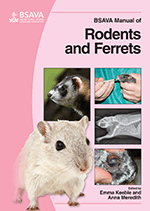
Full text loading...

This chapter discusses biology, husbandry and clinical techniques in more unusual pet species such as chipmunks, duprasi and prairie dog. For each species the chapter considers Natural habit and biology; Captive husbandry and diet; Handling and restraint; Diagnostic approach; Common conditions; Behavioural problems; Anaesthesia and analgesia; and Common surgical procedures.
Rodents: biology, husbandry and clinical techniques in more unusual pet species, Page 1 of 1
< Previous page | Next page > /docserver/preview/fulltext/10.22233/9781905319565/9781905319565.9-1.gif

Full text loading...







